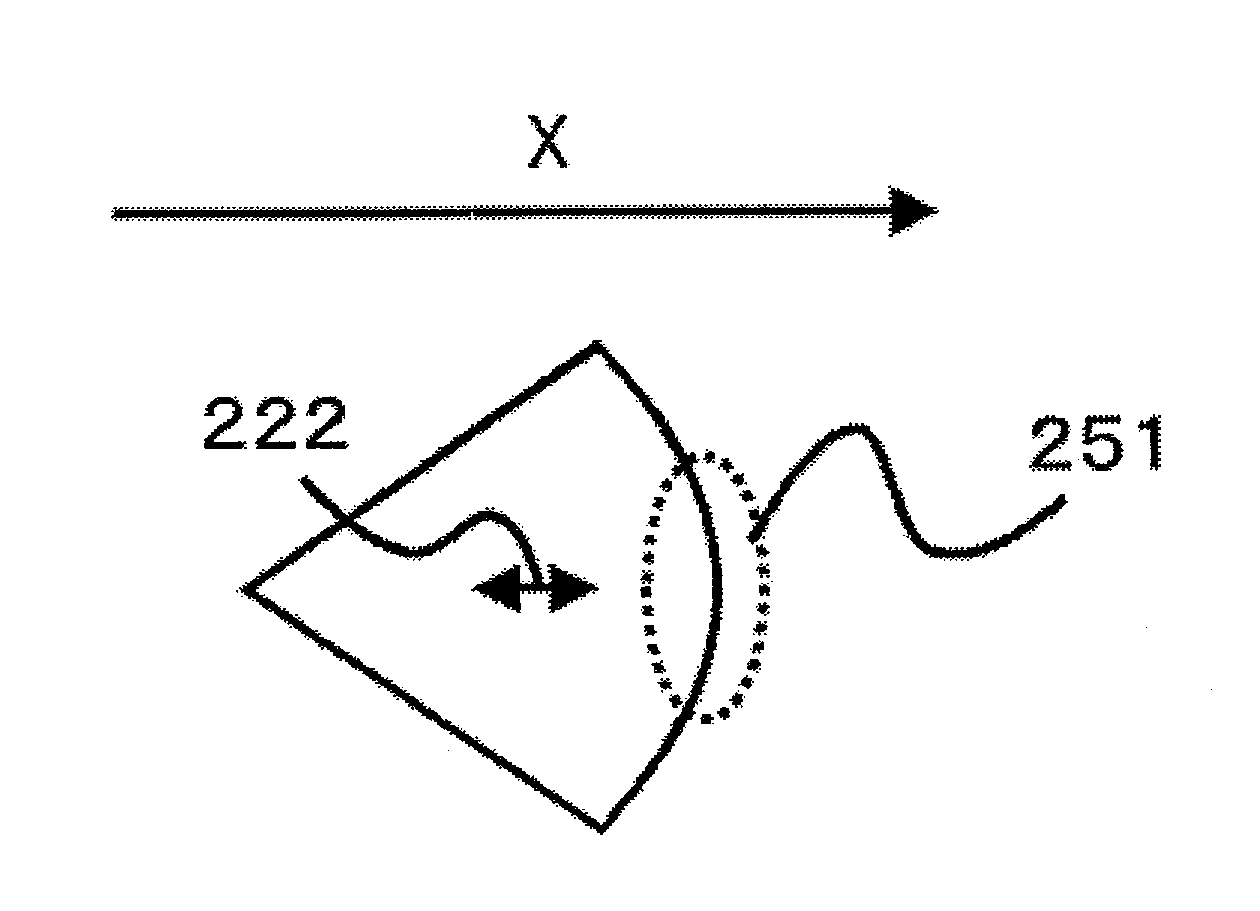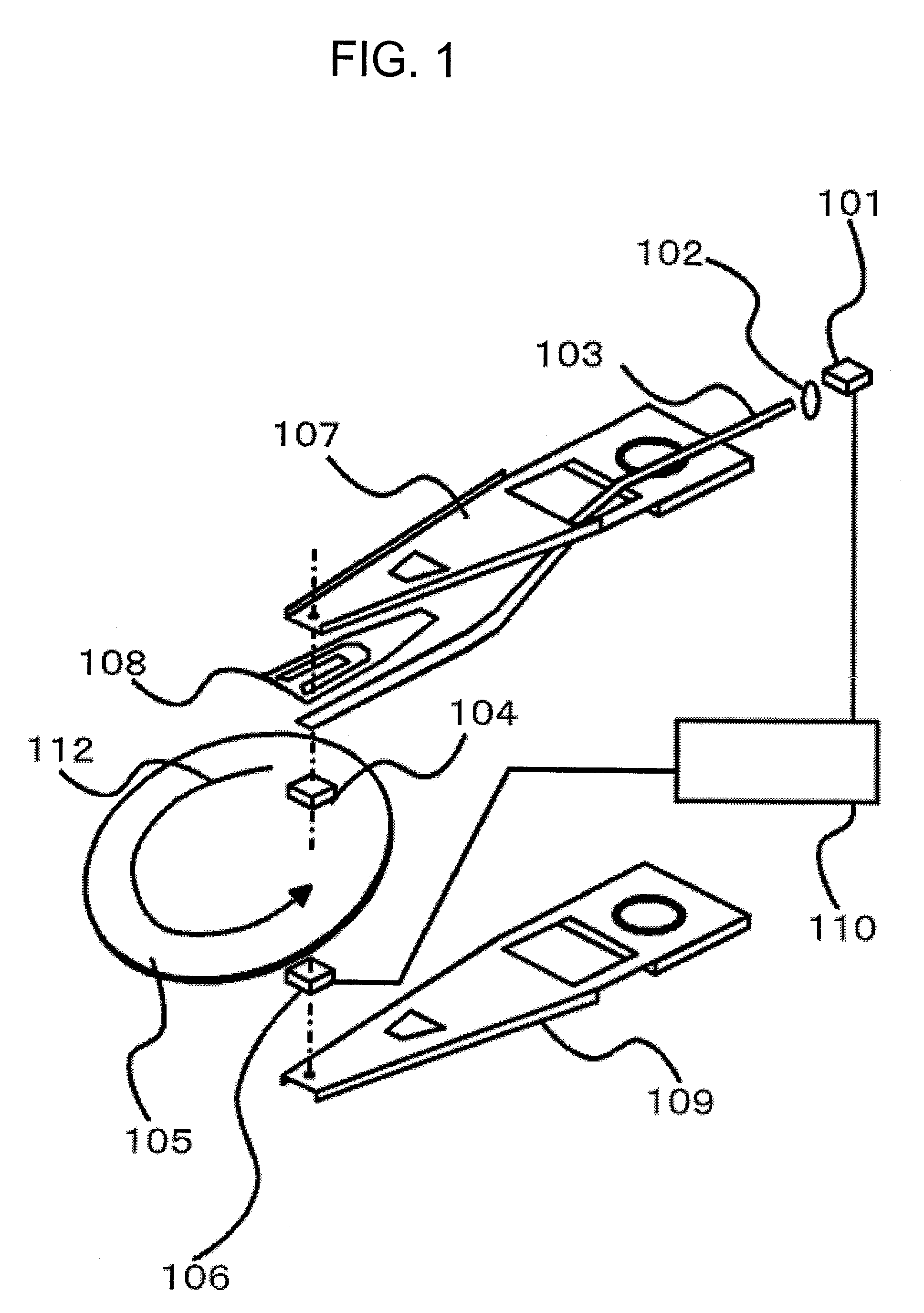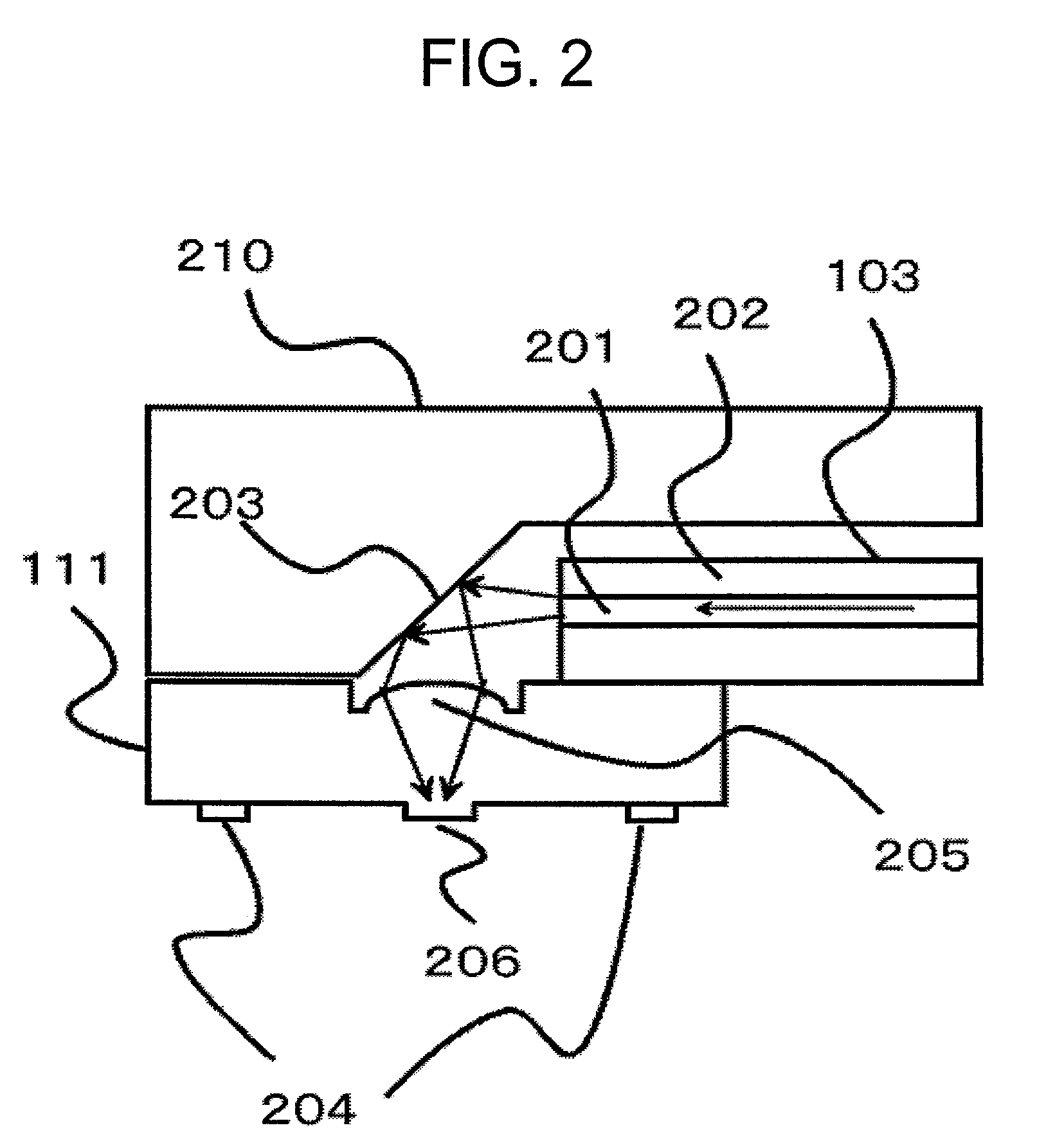Near-field light-generating element for producing localized near-field light, near-field optical recording device, and near-field optical microscope
a technology of near-field light and light-generating element, which is applied in the direction of material analysis using wave/particle radiation, instruments, nuclear engineering, etc., can solve the problems of inability to achieve a rectangle, limited recording densities of optical disks typified by compact discs (cds), and inability to produce near-field light intensity
- Summary
- Abstract
- Description
- Claims
- Application Information
AI Technical Summary
Benefits of technology
Problems solved by technology
Method used
Image
Examples
embodiment 1
(Embodiment 1)
[0057]FIG. 1 is a view illustrating the structure of an information recording-and-reading device of the present embodiment 1. A near-field optical head 104 having a minute aperture (not shown) for producing near-field light is placed at a short distance of tens of nanometers from the surface of a recording medium 105. Under this condition, the recording medium 105 is rotated at a high speed in a direction indicated by the arrow 112. To float the near-field optical head 104 with a constant relative arrangement with the recording medium 105 at all times, a flexure 108 is formed at the front end of a suspension arm 107. The suspension arm 107 can be moved radially of the recording medium 105 by a voice coil motor (not shown).
[0058]The near-field optical head 104 is so arranged that the minute aperture is opposite to the recording medium 105. To guide light fluxes from a laser 101 to the near-field optical head 104, an optical waveguide 103 consisting of a core and a clad ...
embodiment 2
(Embodiment 2)
[0072]FIG. 11 is a view showing the configuration of an information recording-and-reading device according to embodiment 2 of the present invention. Its main configurations are similar to those of FIG. 1 described in embodiment 1. Same components are indicated by same symbols. The difference is that in the present embodiment, a method of introducing light into a near-field optical head 104 consists of shaping light from a laser 101 into collimated light 301 using a lens 102, propagating the light through air, and bending the light vertically with a mirror 302. In other respects, the present embodiment is similar to embodiment 1 and thus description of these similar points will be omitted. In the present embodiment, light from the laser 101 is propagated through air and so the light can be admitted into the near-field optical head 104 while preserving the direction of polarization of the light. The important point of the present invention is that near-field light is loc...
embodiment 3
(Embodiment 3)
[0073]FIG. 12 is a view showing the vicinities of a minute aperture at the bottom surface of a near-field optical head used in an information recording-and-reading device according to embodiment 3 of the present embodiment. FIG. 12 is similar to FIG. 3 except that an Al light-shielding film 411 deposited on the surface of a triangular pyramid is shown in FIG. 12. One face of the three faces of the triangular pyramid is a Ag film 412 instead of Al. A SiO2 or Al layer is deposited to about 100 nm on the surface of the Al light-shielding film 411 and the Ag film 412, although not shown. The front end of the triangular pyramid is cut horizontally to form an optically minute aperture 206.
[0074]FIG. 13 is a plan view of the minute aperture shown in FIG. 12. The minute aperture 206 has a substantially triangular contour. Its right side is substantially perpendicular to the direction of scan x of the head. The portion in contact with this side is the Ag film 412. The other two...
PUM
 Login to View More
Login to View More Abstract
Description
Claims
Application Information
 Login to View More
Login to View More - R&D
- Intellectual Property
- Life Sciences
- Materials
- Tech Scout
- Unparalleled Data Quality
- Higher Quality Content
- 60% Fewer Hallucinations
Browse by: Latest US Patents, China's latest patents, Technical Efficacy Thesaurus, Application Domain, Technology Topic, Popular Technical Reports.
© 2025 PatSnap. All rights reserved.Legal|Privacy policy|Modern Slavery Act Transparency Statement|Sitemap|About US| Contact US: help@patsnap.com



